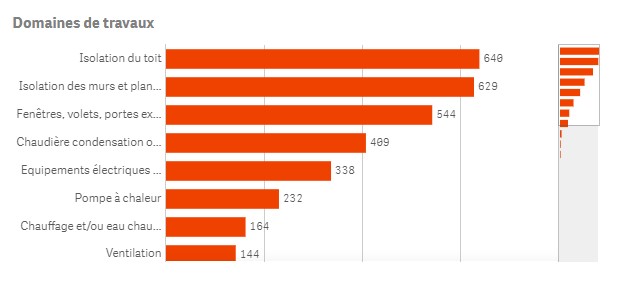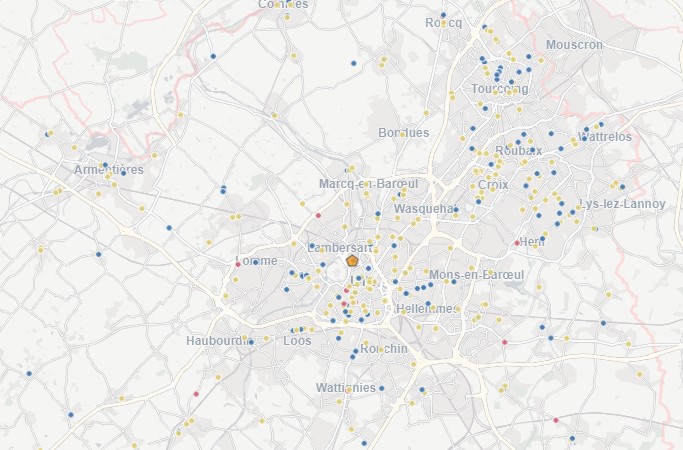As a provider of data marketing solutions, we are often confronted with marketing targeting issues. BtoB marketers and commercials who order target files can be disappointed with the results of their campaigns and attribute a large part of their disappointment to the file. They are not wrong. Targeting has its obvious part in the success of a campaign. Recall that a good campaign is 25% targeting, 25% of the quality of the data, 25% message, 25% of the channel. So, as much as taking time to target effectively.
Preamble
Traditionally in BtoB, the creation of prospecting files is based on 4 main criteria: the company’s sector of activity, its size, its geographical area and the function of the target person.
The result of this type of prospecting often results in very large and unqualitative files. Once the campaign is launched the disappointment can be great especially because of the often very low conversion rates. Reaching 10% opening is already a good result. Going until the signature is often an exploit, and this despite a relevant message.
Even if the sirens of the “the more I send, the more feedback I would have, it’s mathematical” are tempting, it is often more efficient to take more time in preparing its prospecting targets.
So how can we ensure better results?
Having more information about our targets requires a good database. This database fits into two levels of campaign performance. In targeting obviously to attack a more precise target, but also in the message itself, one not necessarily being linked to the other.
Let’s take an example.
A salesman of construction equipment wants to target SMEs from the BTP in Brittany to provide themselves at home. He wants to launch a telephone campaign and a field campaign through his sales people.
The result of a traditional targeting (BTP, Brittany, companies with less than 20 employees) will give you a target of more than 100,000 companies. In other words, it will be difficult to make a big difference among the many calls these companies can receive. Moreover, the message may be too general to be striking.
Let us now analyse these 100,000 companies.
Let us try to search among them micro segments, targets, which will make it possible to better identify them, but also to better speak to them. For example, let us identify their specific areas of work. Beyond the nomenclature of the French Activities little precise, look for their real activity. Without being specialists, professionals in insulation or heating should not need the same material. This falls down many databases exist for this purpose.
Why not also detect recognized artisans who guarantee the environment? Those engaged in a true quality approach. This information could have a real added value in the message addressed.
If you want to start your business, you can directly target larger businesses with an office, administrative headquarters, rather than artisans who are likely to be on construction sites. More importantly, target those closest to your agencies to optimize the cost of prospecting.
In the end, such an approach will allow us to identify several target segments to which we will have to send a message and/or a clean channel.
For example :
- Heating and insulation professionals addressed with a clean email message about the type of equipment they may need
- RGE certified heating professionals addressed by telephone with a script oriented to their RGE certification
- SMEs in construction which will be visited by the business directly
- The other pros of the BTP with a more generalist message sent by emails
- …
This is only one example, of course. Thousands of databases, whether private or public, exist today and make it possible to be much more informed. A balance is then to be found between the time spent collecting data and the construction of the campaign.
The art of finding the data that will make the difference
The analytical method
The example described above would be more of an analytical method. Crossing data, matching information from multiple sources, loading it into mapping applications.
The advantage is that the information is controlled from end to end. Targets can be adapted to live tests can be launched on small targets. The disadvantage lies in the number and cost of preparing these campaigns. To want to target too much, the time load may be heavy, especially for a company without marketing analyst.
The statistical method
There is then a more automated method. Entering as much information as possible into a statistical model, launching a first campaign and detecting among those who responded the statistical element(s) that distinguishes them from the others. This is what we will call a marketing or appetite score. The algorithm itself will do the work to create micro segments deemed statistically relevant.
Read more
Our data marketing support
Discover now Ellisphere’s expertise on your data issues to meet your customer knowledge, prospecting and data management challenges.




